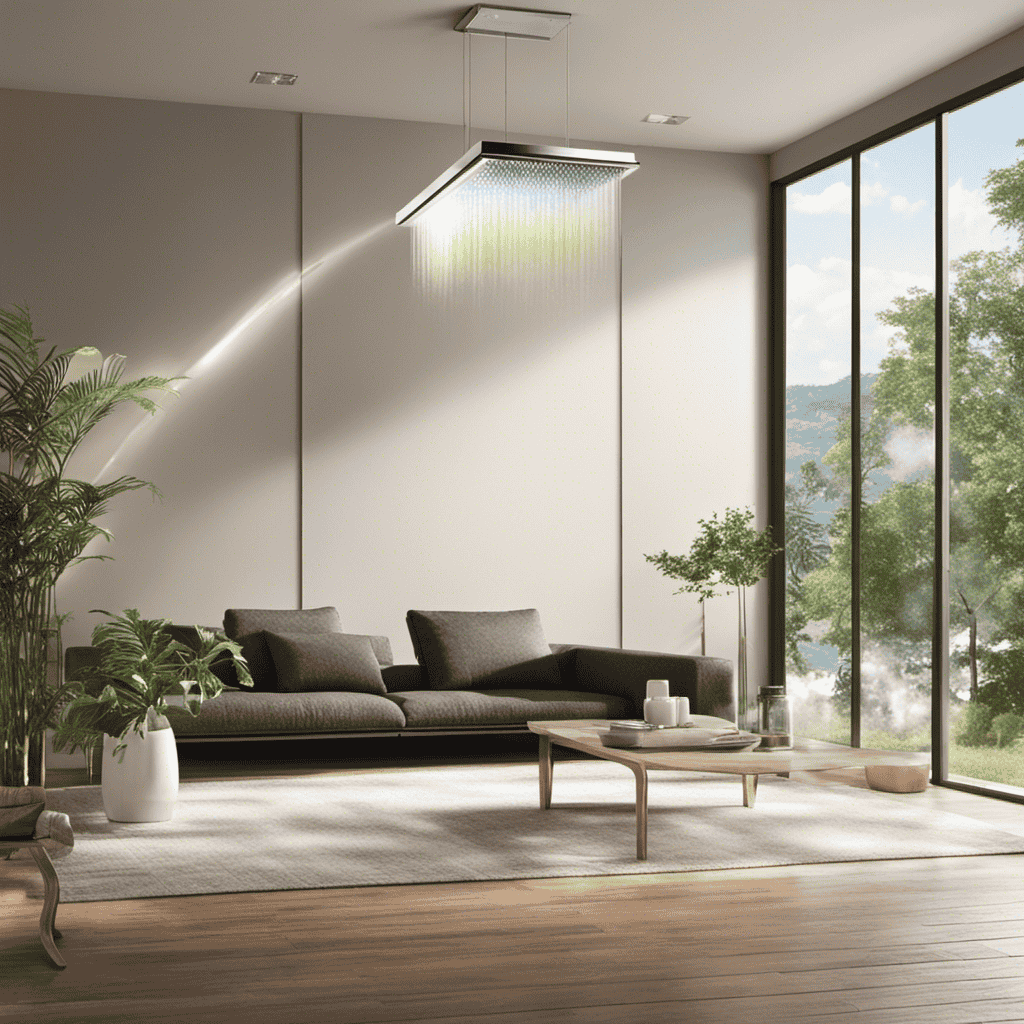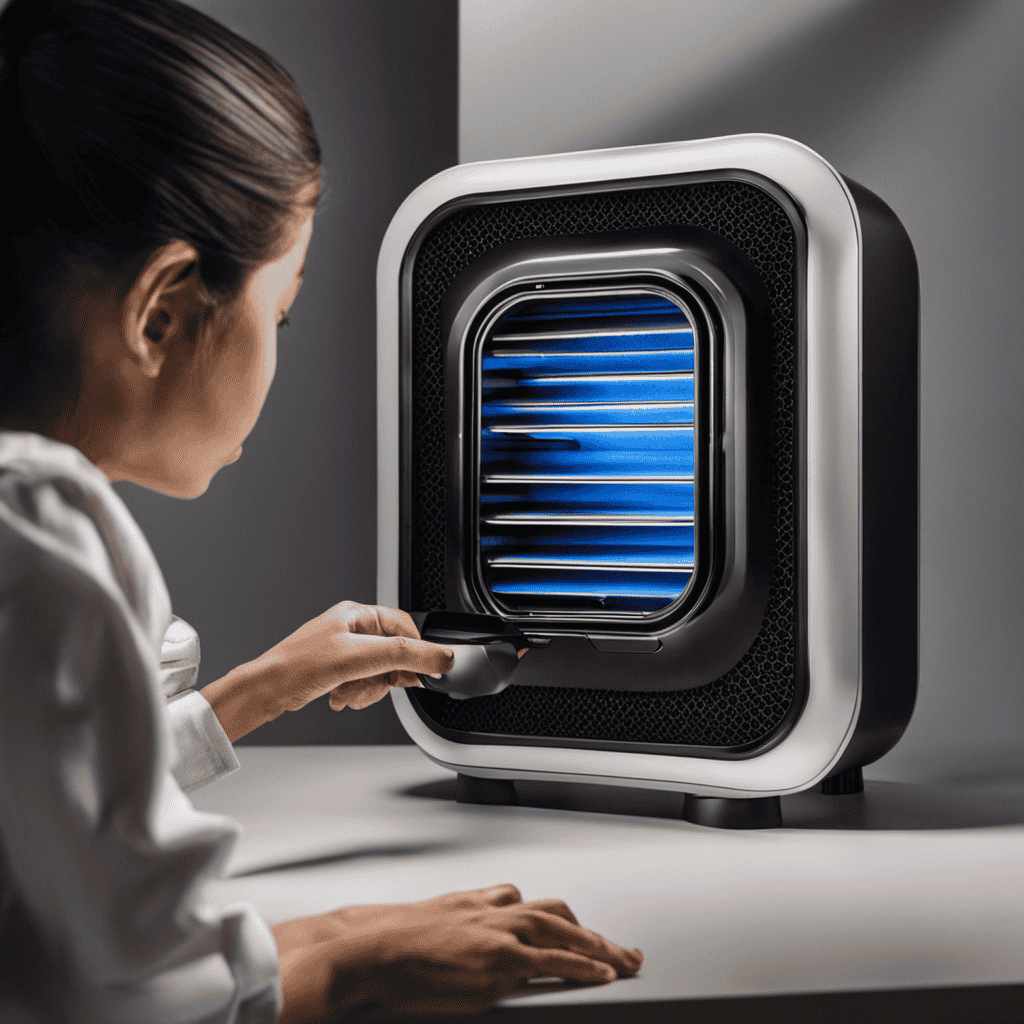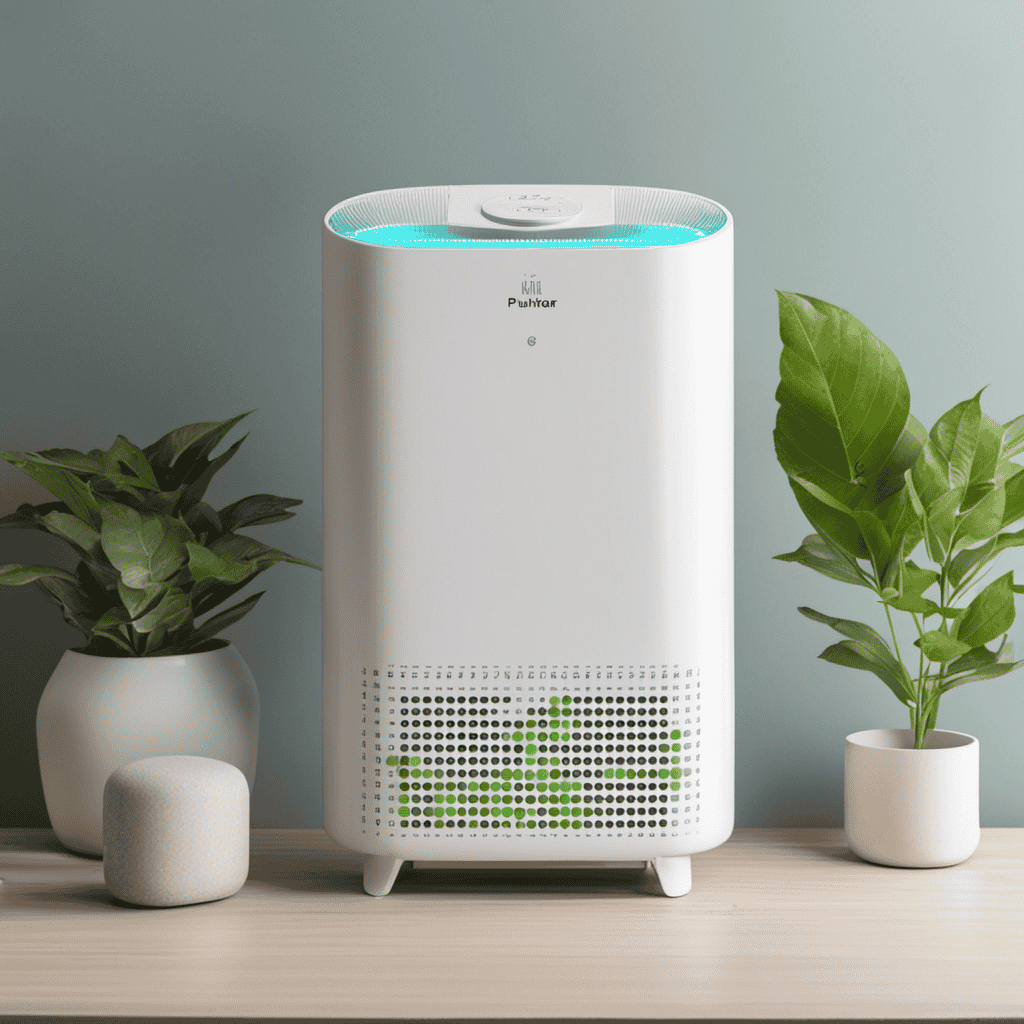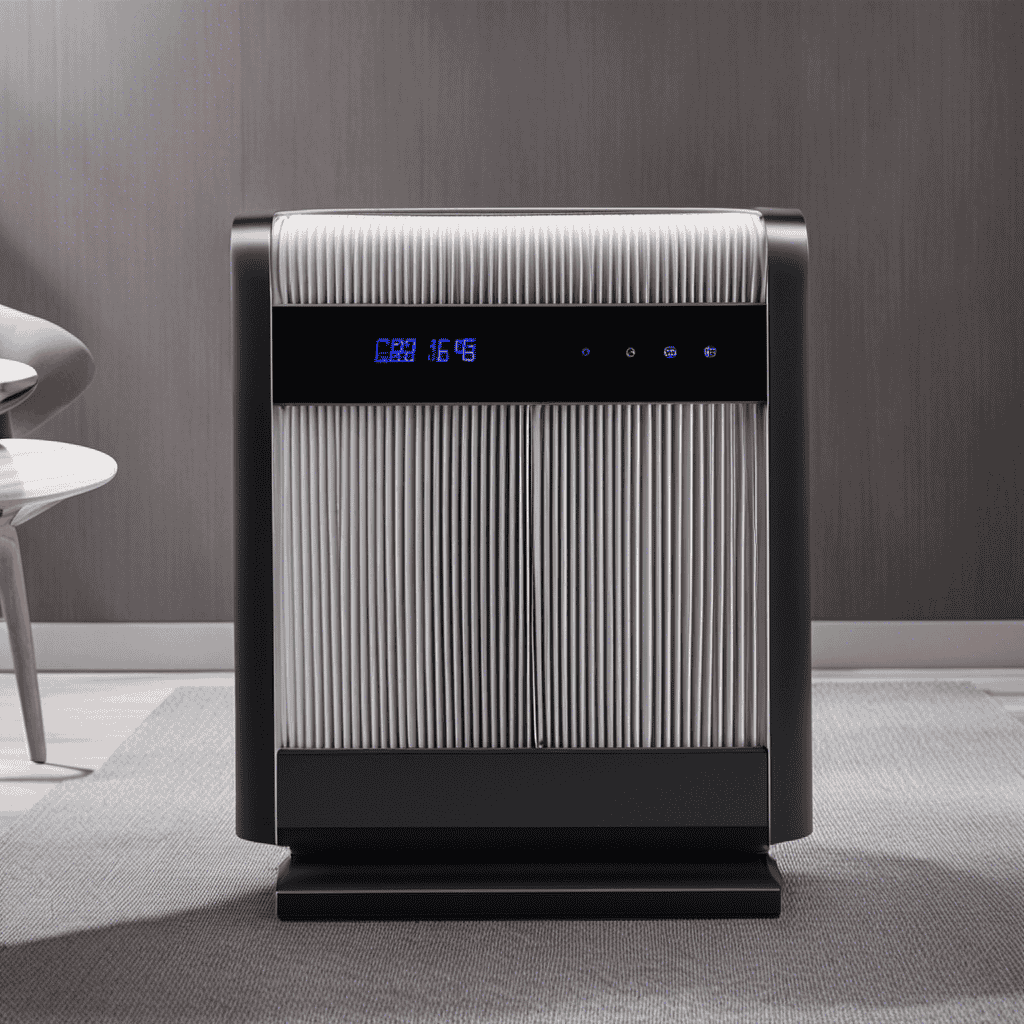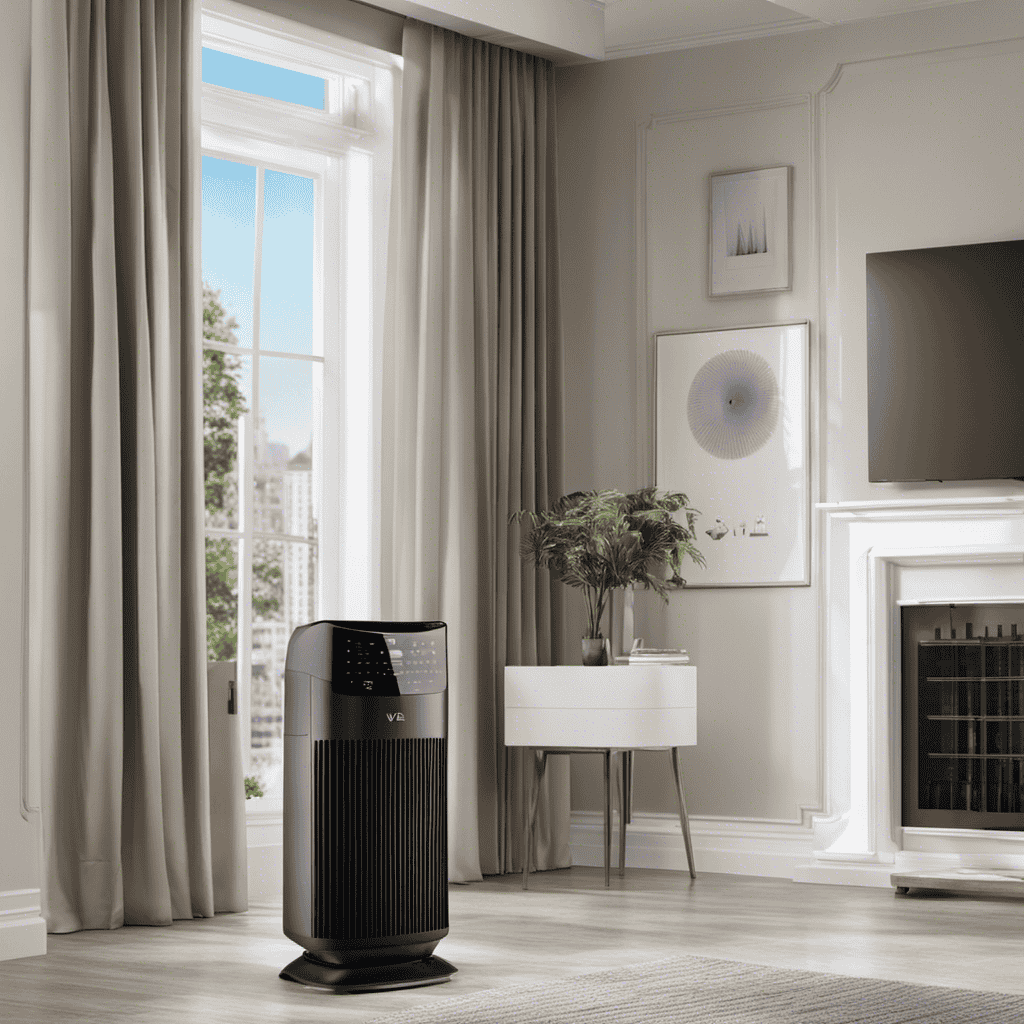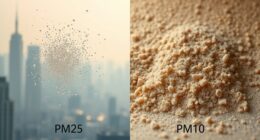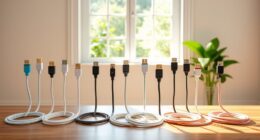I recall the initial moment I switched on my brand new air purifier, and I was taken aback by the fragrance it released. It was clean, refreshing, and almost energizing. It made me wonder, what is that scent exactly?
In this article, we will delve into the various types of smells that air purifiers produce and the factors that contribute to them. We will also explore the odor neutralization process and the common odors that air purifiers eliminate.
So, if you’re curious about the smell that your air purifier makes, keep reading.
Key Takeaways
- Different types of air purifiers use various techniques to remove odors and pollutants, such as activated carbon filters, HEPA filters, ozone generators, and photocatalytic oxidation.
- The effectiveness of an air purifier in removing smells depends on the type of filter and smell removal techniques employed.
- Air purifiers can detect odorous molecules in the air using sensors and trap and remove them using high-quality filters.
- Common odors that air purifiers target and eliminate include those from cooking, pets, tobacco smoke, and household cleaning products.
Different Types of Air Purifier Smells
There are various types of smells that air purifiers can produce. When it comes to air purifier filters, there are three main types: activated carbon filters, HEPA filters, and ozone generators.
Activated carbon filters are effective at removing odors and chemical pollutants from the air. They work by adsorbing the odor molecules onto the filter’s surface.
HEPA filters, on the other hand, are designed to capture particles as small as 0.3 microns, including allergens, dust, and pet dander. They don’t produce any smells themselves but can help eliminate unpleasant odors by filtering out the particles that cause them.
Ozone generators, while effective at removing odors, should be used with caution as ozone can be harmful to human health.
Overall, air purifiers provide numerous benefits, such as improving indoor air quality, reducing allergens, and eliminating unpleasant smells.
Factors Affecting the Smell of Air Purifiers
One of the factors that can affect the scent of air purifiers is the type of filter used. Different filters have different capabilities in removing odors, allergens, and pollutants from the air. Some filters are designed specifically to capture and neutralize odors, while others focus more on removing particles and pollutants.
The type of filter used in an air purifier can determine the effectiveness of its fragrance removal capabilities. Additionally, air purifiers may utilize various smell removal techniques such as activated carbon filters, ozone generators, or UV-C light. These techniques work to eliminate odors by trapping or breaking down the molecules that cause them.
Therefore, when selecting an air purifier to address specific fragrance concerns, it is important to consider the type of filter and smell removal techniques employed.
Understanding the Odor Neutralization Process
The odor neutralization process relies on filters and techniques that capture or break down the molecules causing the smells. To understand how air purifiers eliminate odors, it is important to know the key steps involved:
-
Odor Detection: Air purifiers are equipped with sensors that detect the presence of odorous molecules in the air.
-
Filtration: High-quality filters, such as activated carbon or HEPA filters, trap and remove the odor-causing molecules from the air.
-
Chemical Reactions: Some air purifiers use photocatalytic oxidation or ozone generation to break down odor molecules at a molecular level.
-
Fragrance Options: Some air purifiers offer the option to add fragrances or essential oils to mask any remaining odors and create a pleasant indoor environment.
By employing these techniques, air purifiers effectively neutralize odors and improve the overall air quality in your home.
Now, let’s explore the common odors that air purifiers can eliminate.
Common Odors Eliminated by Air Purifiers
Eliminating common odors in your home is one of the main benefits of using an air purifier. Air purifiers are designed to target and remove various types of air pollutants, including odors. These pollutants can come from a variety of sources such as cooking, pets, tobacco smoke, and household cleaning products.
By using air purifiers, you can effectively control and eliminate these unpleasant odors, creating a cleaner and fresher indoor environment. Air purifiers work by using filters, such as activated carbon filters, which are specifically designed to trap and neutralize odors. These filters are highly effective at removing odor-causing molecules, leaving your home smelling clean and fresh.
In addition to odor control, air purifiers also provide other benefits such as improving indoor air quality and reducing allergens, making them a valuable addition to any home.
Tips for Maintaining a Fresh-Smelling Air Purifier
To keep your air purifier smelling fresh, remember to regularly clean the filters and replace them when needed. Proper air purifier maintenance is essential for improving air quality and ensuring its optimal performance. Here are some tips to maintain a fresh-smelling air purifier:
-
Clean the filters: Dust, dirt, and other particles can accumulate on the filters over time, leading to unpleasant odors. Cleaning the filters regularly will help remove these particles and prevent the buildup of odor-causing bacteria.
-
Replace filters when necessary: Filters have a limited lifespan, and using them beyond their recommended usage can result in a decrease in air purifier efficiency and unpleasant smells. Check the manufacturer’s guidelines and replace the filters accordingly.
-
Clean the purifier’s exterior: Dust and dirt can also accumulate on the exterior of the air purifier, contributing to odors. Wipe down the surface with a damp cloth regularly to keep it clean and fresh.
-
Keep the surrounding area clean: Regularly vacuuming and dusting the room where the air purifier is located will help minimize the introduction of new odors into the air and maintain a fresh-smelling environment.
Frequently Asked Questions
How Long Does the Smell From an Air Purifier Typically Last?
The smell from an air purifier typically lasts for a varying duration depending on factors such as the size of the room, the purifier’s effectiveness, and the intensity of the odor. Its lasting duration can be measured to determine its effectiveness.
Can Air Purifiers Emit Harmful Odors or Chemicals?
Air purifiers can emit harmful odors or chemicals if not properly maintained. It’s important to regularly clean and replace filters to prevent any potential negative effects.
Are There Any Health Risks Associated With the Smell of Air Purifiers?
There can be health risks associated with the smell of air purifiers, depending on the chemicals emitted. However, many air purifiers are designed to eliminate odors and improve indoor air quality, offering health benefits and reducing allergies.
Do Air Purifiers Have a Specific Scent or Fragrance?
Air purifiers can have different scents depending on the type. Some use activated carbon to remove odors, while others release a fragrance. To remove the smell, clean the filters regularly and ensure proper ventilation.
Can the Smell of an Air Purifier Be Adjusted or Controlled?
The smell of an air purifier can be adjusted or controlled depending on the settings. Regular maintenance is essential to ensure optimal performance and eliminate any unpleasant odors. Using an air purifier has numerous benefits for indoor air quality.
Is the Smell of an Air Purifier for Dog Hair Noticeable?
Yes, the smell of air purifiers for dog hair is noticeable, but it depends on the type and brand. Some air purifiers emit a slight odor when filtering out dog hair and dander, while others are virtually odorless. It’s best to research and read reviews to find the most suitable option for your home.
Conclusion
In conclusion, the smell an air purifier makes can vary depending on the type of purifier and the odor neutralization process it uses. Factors such as the type of filter and the presence of activated carbon can contribute to the unique scent emitted by the purifier.
Interestingly, studies have shown that air purifiers can eliminate up to 99% of common household odors, including pet smells, cooking odors, and cigarette smoke.
Maintaining a fresh-smelling air purifier is essential for optimal performance and ensuring clean, odor-free air in your home.
